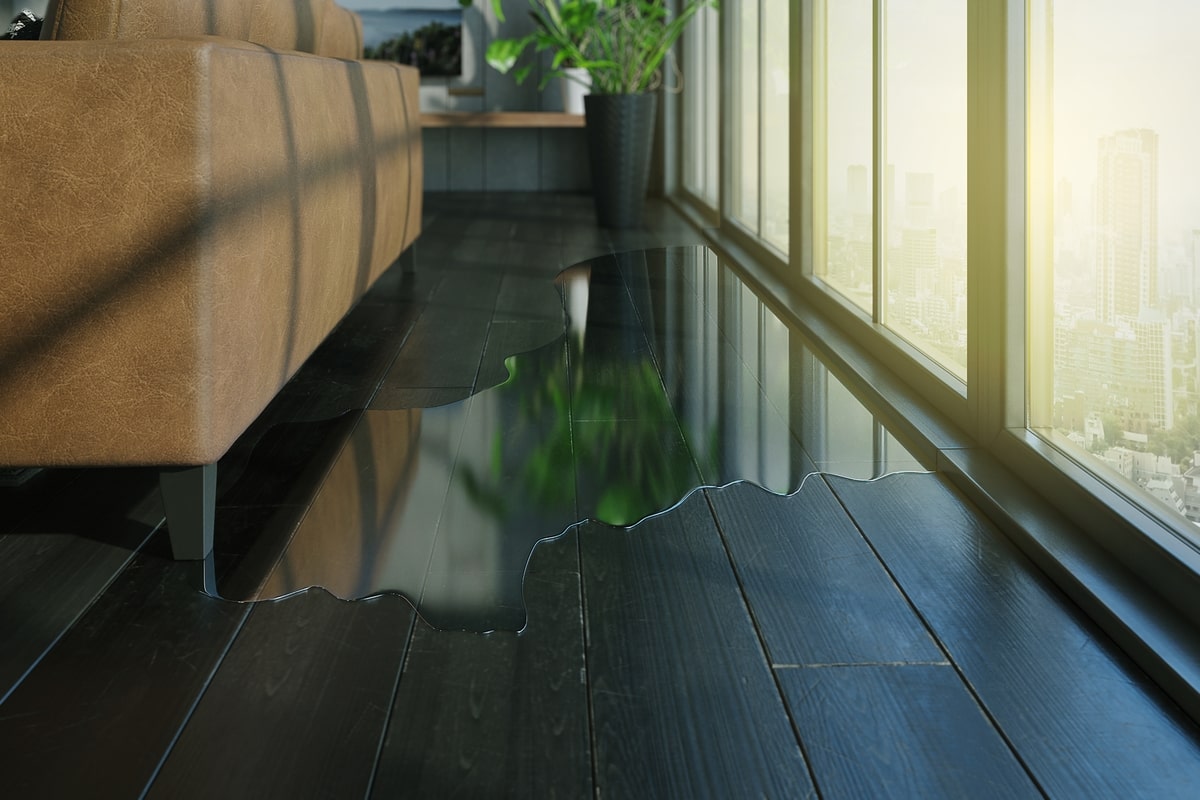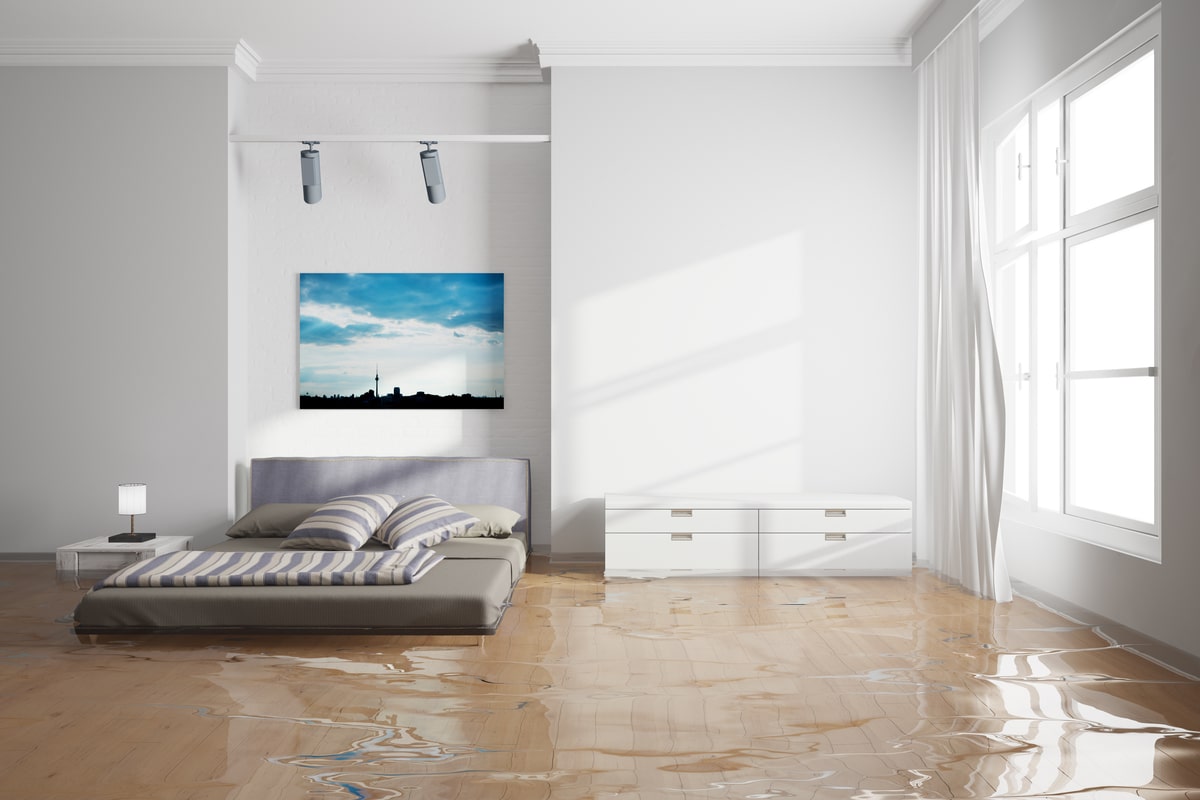How to Document Interior Water Damage for a Stronger Insurance Supplement (Contractor Tips)

Insurance companies can’t just take your word for a water leak insurance claim. They don’t pay based on what a contractor says happened, but based on what they can see, verify, and justify.
You’ll need solid evidence, and that’s why thorough documentation is one of the most critical factors in getting supplements approved for the interior water damage claim process. Without it, you risk carriers pushing back on line items, reducing the scope, or outright denying parts of the claim.
As a contractor, you are well aware of the hidden issues that interior water leak damage can involve, be it soaked insulation, moisture behind walls, subfloor damage, or something else.
Whatever it may be, the point is these aren’t obvious at first glance, and if you don’t document these issues early and properly, you leave the space for adjusters to claim there’s no justification for repairs, and your supplement may get rejected or reduced.
The goal of this guide is to help contractors document every phase of the water damage claim process in a way that supports stronger supplements, avoids unnecessary disputes, and helps pursue the full value of your work.
Why Proper Documentation is Key for Water Damage Supplements
From the insurer’s standpoint, a claim is only as valid as the evidence behind it. Adjusters aren’t working off assumptions; they need detailed proof of both the damage and the justification for repairs or replacements. If that documentation is incomplete, vague, or missing altogether, it becomes a reason for denial or underpayment.
One of the biggest mistakes contractors make is not treating the initial inspection like the best opportunity to capture the scope. If you only snap a few close-ups of visible damage, you miss the bigger picture—literally. Insurers need context. That means full-room shots showing the damage in relation to the space, not just isolated problems.
For interior water damage report:
- Start by surveying all affected rooms, from the ceiling to the subfloor. Look for visible signs like warping, bubbling paint, staining, or separated baseboards.
- Flooring: Even partial damage to flooring can complicate replacement. Use ITEL tests when necessary to document whether matching replacement material is available. Always take clear, wide-angle shots showing the damage and material type.
- Cabinets and kitchen items: Don’t overlook secondary damage. Water can soak into cabinets from behind or below. Appliances, furniture, and personal property touching water may also show damage that needs documentation.
- Hidden mold risks: Mold can start developing within 24-48 hours, especially in dark or enclosed areas. Check behind refrigerators, under sinks, and inside cabinetry for signs of growth or moisture intrusion after mitigation. Document anything suspicious.
Proper documentation supports the initial claim, but it also lays the foundation for supplements when hidden damage, extended drying times, or rebuild issues come to light. The better your evidence, the stronger your position when it’s time to push back on scope gaps.
What Counts as Interior Water Leak Damage?
Interior water damage can show up in various ways. The more specific you are in identifying and documenting it, the stronger your water leak insurance claim supplement will be.
Some of the most common types of interior water damage include:
- Ceilings with water stains, sagging, or bubbling paint
- Drywall that’s soft, warped, or crumbling
- Flooring (especially hardwood or laminate) that’s buckled, swollen, or discolored
- Cabinetry and vanities that are warped or have absorbed moisture
- Electrical systems, where water intrusion may require wire, fixture, or panel replacement due to safety concerns
These damages often result from sources like burst pipes, roof leaks, appliance overflows, and storm or flood events, which contractors frequently deal with during water leak repairs.
From an insurance perspective, water leak damage often falls under a different category than flood damage. Most homeowner policies will cover sudden and accidental water leaks (like a pipe burst), but not rising water from outside (which would be a flood claim). Either way, when you’re dealing with a water leak insurance claim, being able to pinpoint exactly where and how the water caused interior damage is key to getting the full scope approved.
Keep an eye out for signs like warped wood, musty odors, visible dampness, or water marks on surfaces, as all of these signal potential areas of concern that need to be documented thoroughly before mitigation begins.
Step-by-Step: How to Document Interior Water Damage on Site
The most important thing is that you understand the gravity of thorough documentation—it isn’t just about taking a few quick and blurry photos, but about building a visual and factual case that supports every line item you’ll include in your supplement.
Let’s break down how to make a successful water leak insurance claim, step by step.

1. Take Wide and Close-Up Photos
Start by photographing the full scope of the damage in each room. Take wide-angle shots that show entire walls, floors, or ceilings so that adjusters can see the extent of the affected area in context. Follow that with close-up shots that highlight specific issues, like swollen baseboards, water-stained cabinetry, or warped flooring.
Pro tip: Always include timestamps and consistent angles for both pre-mitigation and post-mitigation views. This helps demonstrate the full progression of the damage and the work required to restore the property.
Don’t forget appliances and contents—snap photos of serial numbers, manuals, or digital copies to support replacement claims for damaged items like fridges, ovens, or microwaves.
In basements or lower levels, if water intrusion is present, document areas that may need power washing or anti-microbial treatment, especially on concrete surfaces. If you (or the homeowner) have access to pre-loss photos, include those as well, as they can help prove that the damage was caused by the recent water event and not a pre-existing issue.
2. Moisture Readings & Equipment Logs
Moisture can hide long after standing water is gone, and that’s why moisture readings are critical in proving the extent of the damage and justifying the scope of mitigation.
Take clear photos of your moisture meter readings, making sure the reading display and the area being tested are both visible. Don’t just rely on written readings; visual proof helps establish credibility and backs up your Xactimate line items.
Also, keep detailed logs of all drying equipment used on site, including dehumidifiers, air movers, HEPA filters, and anything else that supports moisture control and mold prevention. Document when each unit was placed, removed, and how long it ran. This data supports your supplement and helps defend your work against pushback on mitigation costs.
3. Detailed Job Notes & Room-by-Room Breakdowns
A strong supplement needs clear, organized field notes. For each affected room, document what was damaged, what materials were affected, and how much labor was required. Include the square footage of impacted areas as well.
For example, if water seeped into a laundry room and damaged 80 sq ft of vinyl flooring, note that specifically. If baseboards had to be removed and replaced, document the linear footage. This type of detail helps justify the full scope, especially when the adjuster’s initial estimate leaves out partial or hidden damage.
Breakdowns like these also give us, as your supplement partner, everything we need to build a bulletproof Xactimate.
4. Collect Homeowner’s Explanation
Don’t underestimate the value of the homeowner’s account. Ask them how and when they first noticed the water damage—was it a sudden appliance failure or a slow leak that became obvious overnight?
Take brief notes and, when possible, ask for a signed statement. Even a simple, dated paragraph can help clarify the timeline and support causation, especially in gray areas like slow leaks or recurring moisture.
This kind of firsthand detail strengthens the claim and shows the insurer there’s a documented history, not just a contractor’s opinion.
5. Create a Clear and Complete Water Damage Report
All the field data you gather—photos, moisture logs, notes, and homeowner input—should be compiled into a single, organized report. Don’t worry—this is the part we jump in to help with, but nonetheless, you should know that this report should include:
- Images with captions, timestamps, and room labels
- Descriptions of damage (what was affected, and how severely)
- Measurements like square footage and material quantities
- Mitigation actions taken, such as equipment used or antimicrobial treatments applied
- Estimates using Xactimate or another accepted format (done by us)
This report becomes your evidence package. It helps justify your scope and makes it easier for us to step in and advocate for full reimbursement.
Understanding the Water Damage Claim Process
When interior water damage strikes, the insurance claim process typically follows a set path:
- First Notice of Loss (FNOL): The homeowner contacts their insurance company to report the damage.
- Initial Inspection: An adjuster is sent to assess the damage and create a report outlining what’s covered.
- Emergency Mitigation: Contractors often begin drying out the space, removing damaged materials, and preventing mold growth.
- Initial Estimate & Payout: The insurer issues payment based on the first adjuster report, which often reflects only visible or surface-level damage.
- Repair Work Begins: As contractors open up walls or flooring, they may uncover additional issues not included in the original claim.
- Supplement Filing: At this point, a supplement is submitted to the insurer with updated documentation, photos, and a revised estimate to cover newly discovered damage or code upgrades.
- Supplement Review & Approval: The insurer evaluates the additional documentation, and if accepted, issues a second (or third) payment to cover the expanded scope of work.
Partnering with Claim Supplement Pro for a Successful Water Leak Insurance Claim Increase
Filing a successful claim after a water leak doesn’t end with submitting the initial paperwork. Working with a supplementing team increases your potential to recover the full value of your loss, especially when unexpected issues surface later. We need to be sure you understand the difference between initial claims and supplemental requests.
- Initial claims are submitted shortly after the damage occurs and typically reflect what’s visible and urgent at the time.
- Supplements are follow-up requests made when the original claim didn’t include the full scope of work, like additional repairs discovered during demo, hidden damage, or code-required upgrades.
Our joint job, if you choose us as your supplementing partner, is to gather strong, clear supplement documentation. That means:
- Align your photos, notes, and repair scope with what adjusters and carriers expect. The clearer your evidence, the stronger your position.
- Use Xactimate estimates backed by visual proof and detailed notes. We know how to structure and submit supplements in a way insurers recognize and accept.
And finally, don’t just file and forget. Following up proactively, especially when the supplement is pending, can make all the difference. Claim Supplement Pro helps here too, handling adjuster communication, supplement justification, and revisions so you don’t have to chase it down yourself.
Final Tips & Thoughts
If there’s one thing insurers won’t accept, it’s guesswork. To get supplements approved, organized, visual, and detailed documentation is non-negotiable. Always include:
- Photos of the damage, from wide angles to close-ups, ideally with timestamps.
- Line-item estimates (e.g., Xactimate) that break down material and labor costs.
- Moisture logs and demo documentation to support the drying and removal scope.
The better your documentation, the better your chances of supplementation. And the best of all, you don’t need to go through any of this alone.
Claim Supplement Pro is here to help you supplement complex water damage claims, supporting you with expert documentation reviews, estimate writing, and supplement handling. Reach out anytime and let us take this part off your plate so you can stay focused on your job.

